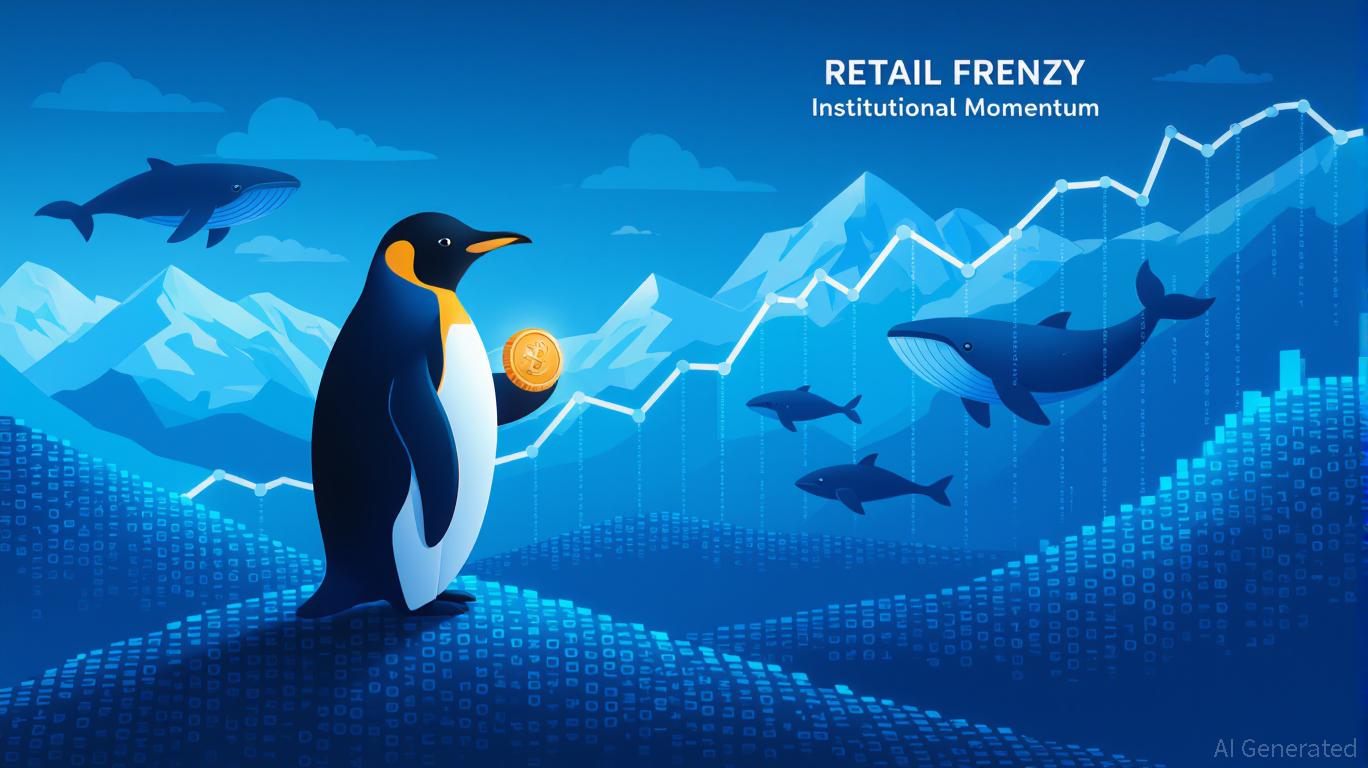Investment Prospects in Layer 2 ZK Technologies After the ZK Atlas Enhancement
- ZK Atlas Upgrade (Oct 2025) boosts blockchain scalability via modular ZK solutions, enabling 15,000–43,000 TPS with $0.0001 per transaction costs. - Ethereum gas fees dropped 90%, TVL in ZK rollups hit $3.5B by 2025, with Deutsche Bank adopting ZK-rollups for institutional settlements. - Deflationary tokenomics drive capital efficiency: buybacks, burns, and staking rewards attract institutions, supported by $15B in Bitcoin ETF investments. - Analysts project 60.7% CAGR for ZK Layer-2 solutions, reaching
Technical Innovations and Scalability Breakthroughs
Central to the ZK Atlas Upgrade is a modular system that separates transaction ordering, execution, and proof creation. This setup allows
Market Impact and Institutional Adoption
The technical achievements of the upgrade have led to concrete market benefits.
Deflationary Tokenomics and Capital Efficiency
The ZK Atlas Upgrade has introduced a deflationary token model as a key part of its economic framework. Network revenues are directed toward buybacks, token burning, and staking incentives, generating a positive feedback loop that appeals to capital-focused institutions.
Future Projections and Long-Term Potential
Conclusion
The ZK Atlas Upgrade has not only tackled scalability issues but also transformed the value proposition of Layer 2 technologies. By driving down costs, speeding up transactions, and building institutional confidence, it has set off a cycle of adoption and capital inflow. For investors, the landscape after the upgrade presents a rare mix of technological advancement, economic rewards, and market momentum. As the ecosystem develops further, early participants are poised to benefit from both the practical growth of ZK networks and the deflationary nature of their native tokens.
Disclaimer: The content of this article solely reflects the author's opinion and does not represent the platform in any capacity. This article is not intended to serve as a reference for making investment decisions.
You may also like
Bitcoin News Today: Bitcoin's Unstable Holiday Periods Hide Average Gains of 6%
- Bitcoin's Thanksgiving-to-Christmas performance shows equal odds of rising or falling, with a 6% average seasonal return despite volatility. - Historical extremes include a 50% 2020 rally and 2022's 3.62% drop post-FTX collapse, amid a $2.49-to-$91,600 long-term surge since 2011. - 2025's $91,600 price reflects ongoing recovery from 2024's $95,531 peak, with institutional crypto adoption and macroeconomic factors shaping future trajectories. - Analysts advise dollar-cost averaging for retail investors, w

Australia Strikes a Balance Between Fostering Crypto Innovation and Safeguarding Investors with Updated Regulations
- Australia introduces 2025 Digital Assets Framework Bill to regulate crypto platforms under ASIC, creating "digital asset platform" and "tokenized custody platform" licenses. - The framework mandates custody standards, transparency requirements, and lighter regulations for small operators (<$5k per customer) to balance innovation with investor protection. - Global alignment with UAE and EU crypto regulations is emphasized, while addressing risks from past failures like FTX through stricter enforcement and

PENGU Token's Latest Price Fluctuations and Blockchain Indicators: An Analytical Perspective on Technical Factors and Institutional Activity
- PENGU token's recent volatility and on-chain activity spark debate over institutional involvement in the crypto market. - Technical indicators show conflicting signals: overbought RSI vs. positive MACD/OBV momentum since November 2025. - Whale accumulation and Solana integration suggest strategic buying, while team wallet outflows highlight market uncertainty. - Social media sentiment drives short-term price swings, but structural risks like tokenomics and regulatory ambiguity persist. - Institutional ad

GameStop's Profit Strategy: Short Sellers, Brick-and-Mortar Stores, and Interest Rate Expectations Intersect
- GameStop (GME) shares rose near 52-week lows amid high short interest and retail-driven speculation, with a potential short squeeze looming as open options activity surged. - Institutional investors cut $5.4B in MicroStrategy (MSTR) holdings, linking crypto-focused MSTR to GME's 2021 meme stock dynamics amid MSCI index exclusion risks. - A December Fed rate cut (85% probability) could boost retail spending and speculative appetite, countering bearish positioning despite GME's 21.8% Q3 revenue growth. - A
